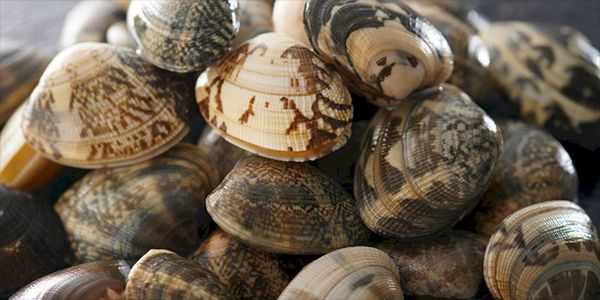Carpet Shell price

Where to buy and sell Carpet Shell, lowest (cheapest) and highest price.
check offers buy sell Carpet ShellToday price for Carpet ShellCarpet Shell wholesale prices 2022
The Current commodity price of Carpet Shell per kg, pound in the world in the global markets
Carpet Shell
The Carpet Shell Clam is a bivalve mollusk that can be found in saltwater habitats around the world. This clam gets its name from the beautiful, colorful shells that it produces. The shell of the Carpet Shell Clam is composed of two parts, or valves, that are connected by a hinge. The exterior of the shell is often covered in a thin layer of mud or algae. The Carpet Shell Clam is a filter feeder, meaning that it feeds by filtering water through its body to capture tiny food particles. This clam uses a special organ called a gill to do this. The gill is covered in thousands of tiny hairs, or cilia, that help to trap food particles. The Carpet Shell Clam then uses its muscular foot to move the food-filled water towards its mouth. Carpet Shell Clam is an important food source for many animals, including humans. This claim is often harvested for its meat, which can be eaten raw, cooked, or used in a variety of recipes. The Carpet Shell Clam is also used in traditional Chinese medicine. The Carpet Shell Clam is considered to be a species of least concern by the International Union for Conservation of Nature (IUCN). This means that the Carpet Shell Clam is not currently at risk of becoming extinct. However, the IUCN does note that the Carpet Shell Clam faces some threats, such as pollution and habitat loss. Despite these threats, Carpet Shell Clam is still a common sight in many saltwater habitats around the world. This clam can be a valuable addition to any ecosystem. Mollusks are an important source of food for humans and other animals. They are also used in a variety of industries, such as pearls and mother-of-pearl production, and their shells are used to make buttons and other products. Mollusks have a soft body that is often enclosed in a shell. The body is divided into two main parts: the head and the foot. The head usually has eyes and a mouth, and the foot is used for locomotion and for gathering food.Global carpet shell production
Carpet shell is one of the main species of edible clams consumed in Spain. It is also popular in Portugal, Italy, and Morocco. The global production of carpet shells was estimated to be around 381,000 tonnes in 2016. Spain is the main producer of this species, with a production of around 200,000 tonnes in 2016. Portugal is the second main producer, with a production of around 81,000 tonnes in 2016. Italy is the third main producer, with a production of around 25,000 tonnes in 2016. Morocco is the fourth main producer, with a production of around 21,000 tonnes in 2016. Carpet shell has a wide range of uses. It can be used as food, either cooked or raw. It is also used in the manufacture of cosmetics and pharmaceuticals. Carpet shell is also used as bait for fishing. The global production of carpet shells is expected to increase in the future due to the increasing demand from consumers. This will lead to an increase in the price of this species.Download our new
Husfarm App
Stay up to date with the current prieces of agricultural products all over the world.
Do you want to sell agricultural products?
Are you an Agricultural processor looking for high-quality products to buy?
Post an ad for FREE!
